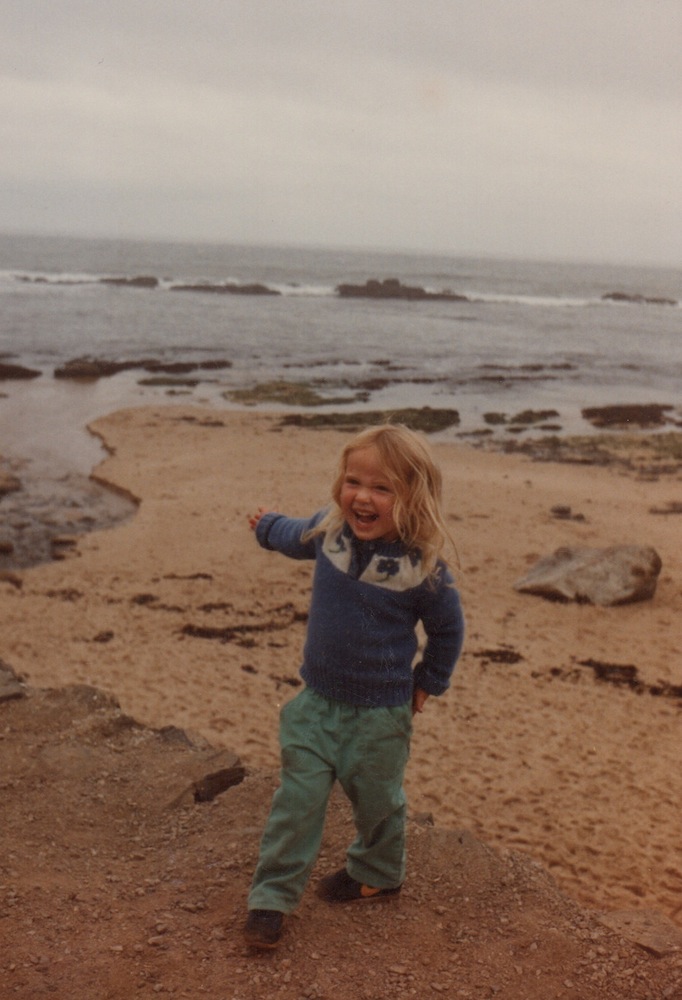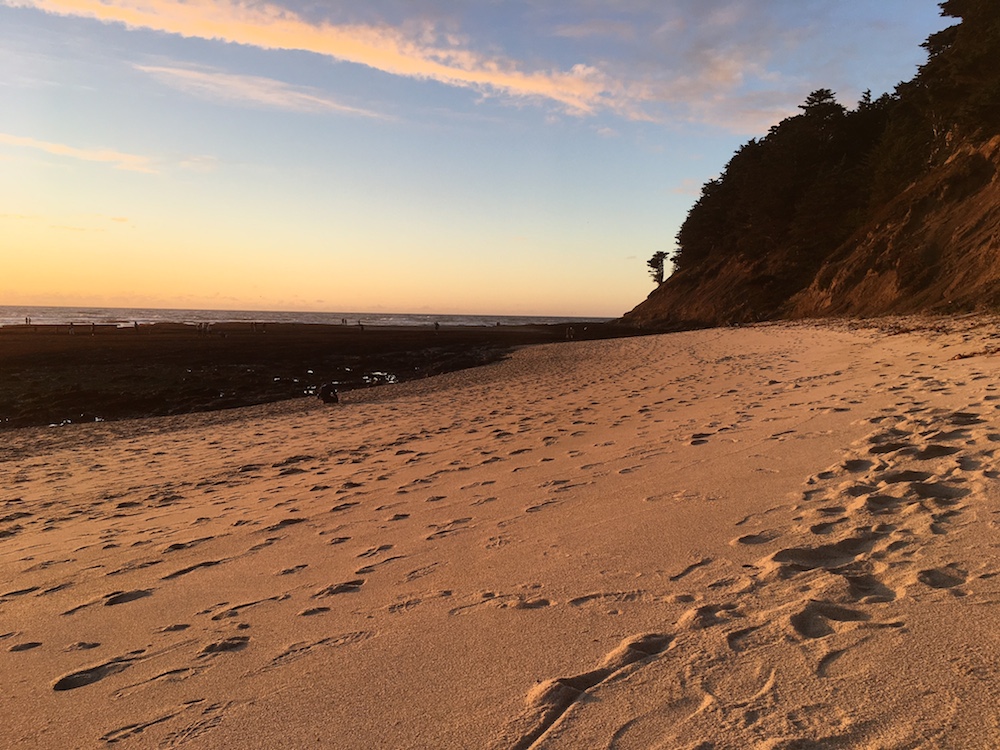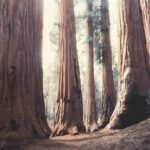
I knew from the beginning where I wanted to take the photo for the home screen of this website—Moss Beach, California. I was thrilled when my friend and photographer Tanya Anguita said she was rehearsing on the weekend in Pacifica. “Pacifica? That’s right around the bend from Moss Beach. Let’s meet there!” I hadn’t thought it would be possible. Tanya is a mother of a 4-year-old daughter, a busy photographer, and she was performing in the holiday Dickens Faire. And then it came together with ease…crazy wind and a stretch of beach closed for resting Harbor seals, but we made it to Moss Beach.
Why Moss Beach? Once upon a time, when my daughter Zoe was three-years-old, it was time for us to find a new home. Her father and I headed north across the Golden Gate Bridge from San Francisco, but then, pulled by some invisible magnet, we found ourselves making a huge loop and driving south to end up in Moss Beach, 30 minutes south of San Francisco. Moss Beach is home to the Fitzgerald Marine Reserve, an intertidal zone teeming with life forms with exotic names and strange looks to match—Nudibranchs, Gumboot chitons, echinoderms. At extreme negative tides that occur at new and full moons, the Fitzgerald Marine Reserve tide pools reveal creatures you wouldn’t ever encounter in their natural habitat without diving.
On the street right beside the ranger station, we noticed a FOR RENT sign on a house. And after a phone call and a brief conversation, we found ourselves new residents of the tiny town of Moss Beach. It had a gas station, a few churches, a convenience store, and a post office. But the Fitzgerald Marine Reserve became our real home.
The day we moved in, I made a silent promise to myself and my three-year-old that I would spend some part of each day, no matter what other demands on my time and no matter what the weather, out on that beach seeing what we’d see. I didn’t realize consciously yet, but I intuited how important it was to make nature our default, and I knew the way to do that was to commit and show up. When you show up for nature, day after day, you witness amazing things. We learned where the octopi hang out and how to find them. We learned just how many varieties of Nudibranchs lived in the waters there when before, we never even imagined that such creatures existed. We learned that starfish display a range of brilliant colors that pictures in a book cannot do justice to. Who knew? We learned the ebb and flow of the tides and the pull of the moon. Day after day out in the elements of rain and sun and fog and surf spray, amidst seagull calls and seal barks, looking eye to eye with octopi, we learned—in our bones—that we too are nature. It’s all too easy to forget.

You don’t have to move your family to the beach to make nature your default. (Just remember…sometimes you have to head north to go south.) Follow your own pulls. Making nature your default could be going on frequent bird walks through the city with binoculars slung over your shoulders. It could be taking tree walks, learning to identify trees in your neighborhood and learning what creatures call what trees home, what day that tree blossoms, when that tree’s fruit ripens. It could be working with a creek restoration group. It could be going to a Farmer’s Market every week (or trying out a CSA—Community Supported Agriculture), getting to know some of the farmers, and planning a group outing to visit their farms.
Seek out organizations in your community that help people to get outside. Here in the Bay Area, my favorite organizations are Bay Nature (and their awesome magazine by the same name), and LandPaths—both of these non-profits organize many monthly events to get people outside, connected, and involved. Here is Bay Nature’s Mission and Vision:
Bay Nature Connects the people of the Bay Area to our natural world and motivates people to solve problems with nature in mind. Our vision is that all people have a close relationship with their natural world.
LandPaths’ education program is called In Our Own Backyard. Working in partnership with the Sonoma County Agricultural and Open Space District, they help students develop a connection to an open space property through quarterly, theme-based visits (themes are Discovery and Exploration, Watersheds, Habitat, and Stewardship). They describe the IOOBY mission:
LandPaths seeks to cultivate a level of comfort in, connection to, and informed appreciation of the outdoors with IOOBY participants. Students develop a relationship with the outdoors that they will remember and carry with them for years. Ideally, this connection will be a foundation for them to draw upon in the future, to seek out outdoor experiences for many reasons.
If you are unfamiliar with groups in your area, Sierra Club has a presence in most urban areas and is a great hub to identify local nature organizations and group activities. Visit the Sierra Club website—you should be able to find local events here. They usually organize hikes by distance and level of challenge so you can easily find events that are age- and ability-appropriate.
Here’s an invitation. How are you creating a foundation for your children to develop a deep connection with nature that they can draw upon in the future? I’d love to hear your successes and challenges. What local organizations are you discovering that help people to connect more deeply with nature? Write me (to respond, use the Contact form in the About section) to let me know what’s working and what’s not, and what organizations you love. I’ll schedule a video call with you to talk about it together.


